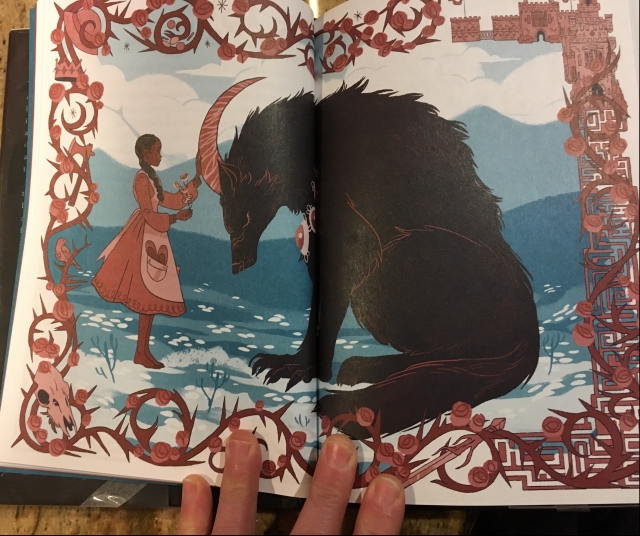 Leigh Bardugo‘s book The Language of Thorns: Midnight Tales and Dangerous Magic (2017) contains her six modern fairy tales with twists on old storylines to shake up the staid perspectives and assumptions of traditional fairy tales.
Leigh Bardugo‘s book The Language of Thorns: Midnight Tales and Dangerous Magic (2017) contains her six modern fairy tales with twists on old storylines to shake up the staid perspectives and assumptions of traditional fairy tales.
I read this book on my kindle as a loan from our public library. Then our school library got a copy of the book and I checked it out. It was not until I started reading the first story that I realized I had already read the book.
Bardugo assigns each tale an imaginary country of origin, and if you look in the back of the book, she provides a map so you can see them. This world is roughly like the current world (at least to my eyes) but with Africa, Europe and Asia still smushed together as though these tectonic plates had not moved apart yet. This is a rather clever play on how folklorists try to assign each fairy tale a country of origin.
The twists in the stories usually come at the end when a sudden revelation is made which makes you rethink the entire tale. In some ways, her narrative technique reminds me of how M, Night Shyamalan reveals at the end of Signs that the Bruce Willis character is actually dead. Her female characters are strong, intelligent, self-willed, and sometimes wicked. For example, she likes to go against stereotypes: the wicked step-mother is actually the little girl’s protecting guardian and the blonde beautiful girl is a cruel huntress. She has her own variants of “Little Red Riding Hood” with werewolf-vampires, “The Little Mermaid,” “The Minotaur,” and “The Nutcracker.’ She is not shy about violence or sex so I would not recommend these tales to the innocent or the young although the beautiful illustrations might make you think that the target audience of this book is the young.
The stories are lavishly illustrated by Sara Kipin in the old-fashioned way with colorful borders and full double-paged drawings. This book really does harken back to the times of the great late Victorian and early twentieth-century illustrators such as Arthur Rackham and Kay Nielsen.
The border illustrations are not static and well worth observing closely because they provide artistic commentary on the action of the tales such as this border for the story “The Too-Clever Fox.” Notice the difference between the vitality status of the creatures on the left-hand side vs the right-hand side.

One of the border illustrations for “The Too-Clever Fox”

The last illustration for “Ayama and the Thorn Wood”


